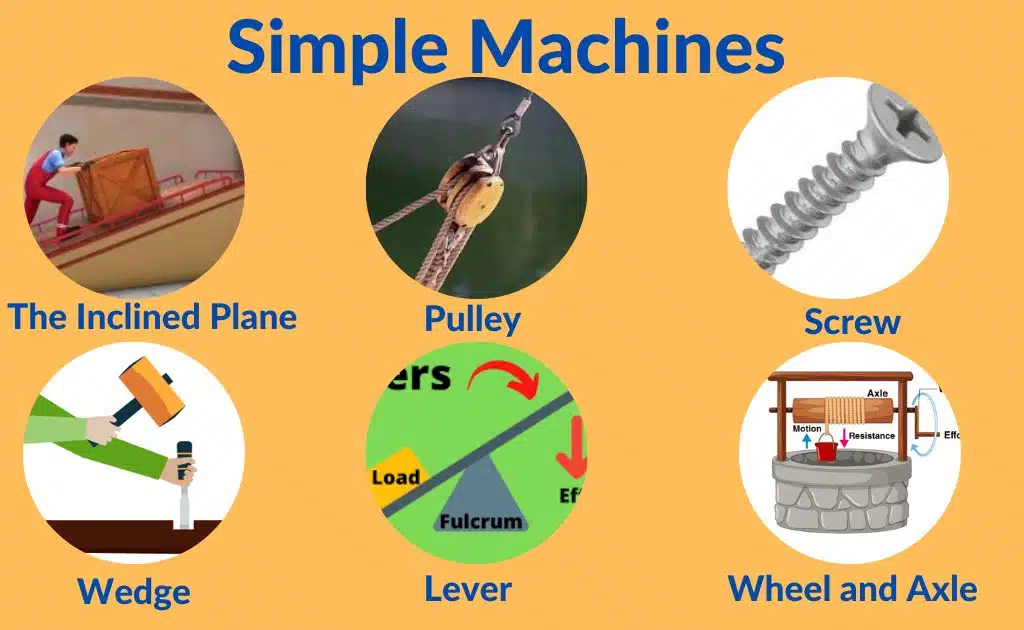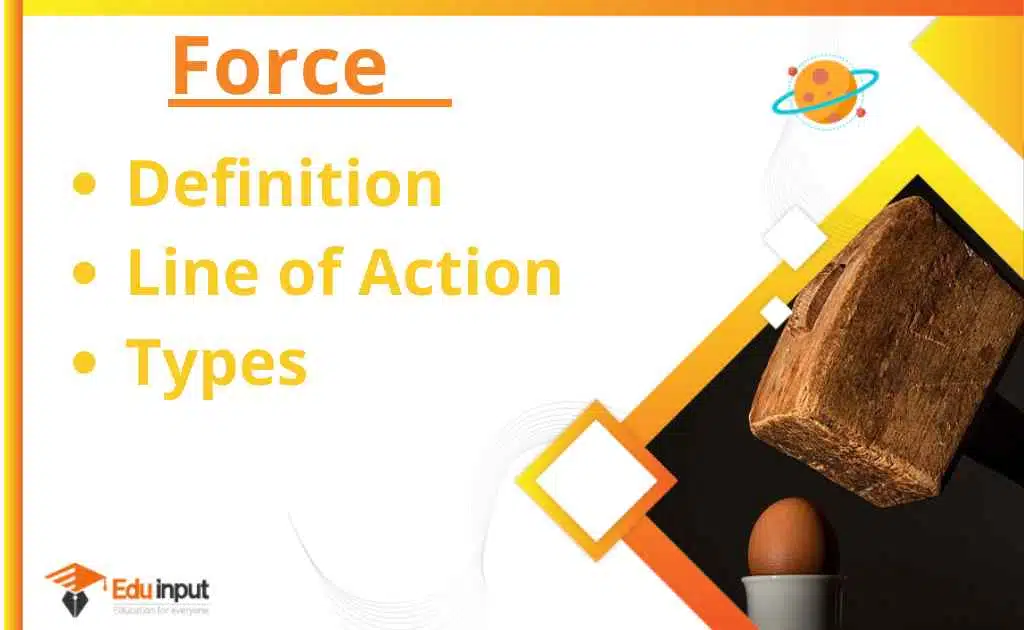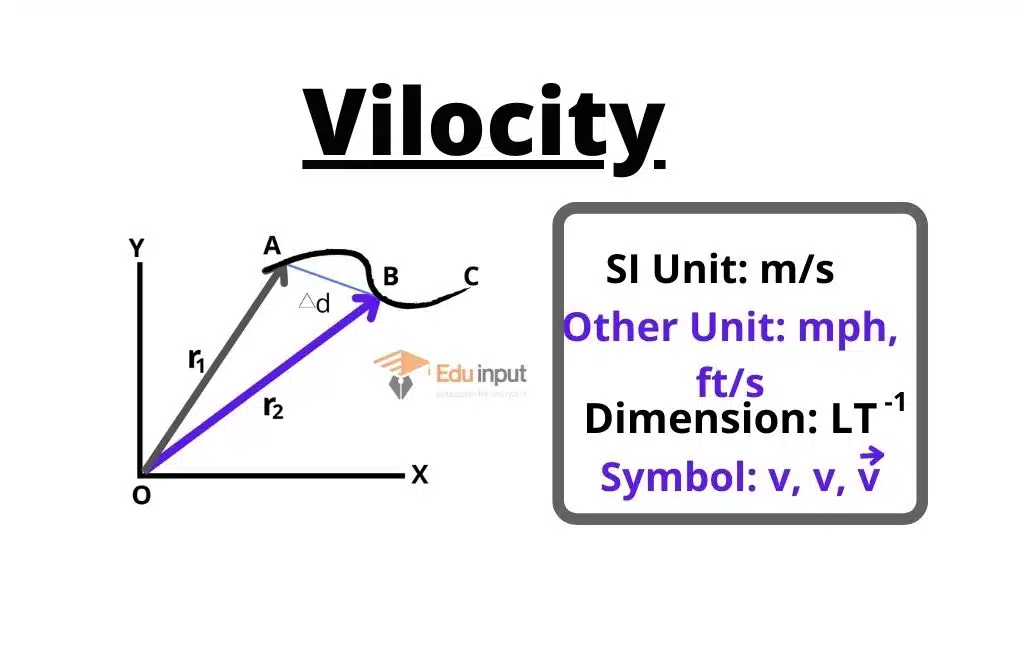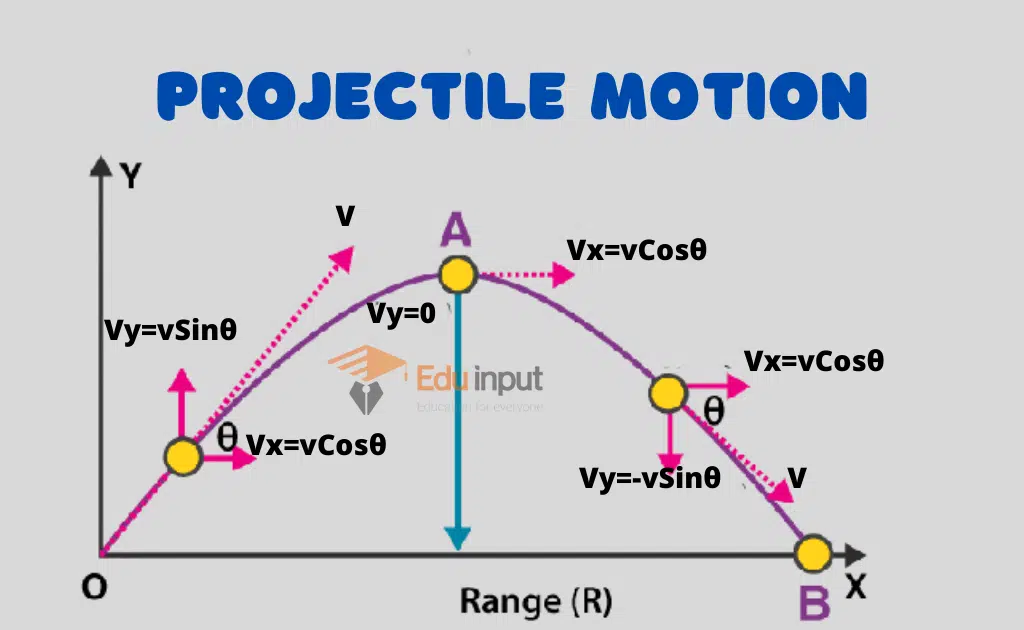Simple Machines-Definition, And Types
Simple Machine Definition
A simple machine is a basic mechanical device that helps to perform work by either changing the direction or magnitude of a force. Simple machines are typically designed with few or no moving parts and utilize the principles of physics to make tasks easier.
Simple machines are often considered the building blocks of more complex machines and can be found in various everyday objects and systems.
What is a Simple Machine?
A simple machine is a mechanical device that changes the direction or magnitude of a force. It generally refers to the simplest mechanisms that leverage mechanical advantage to multiply force.
A machine works using a single applied force. It applies a force in a different direction than the work being done. The work done on a load is the same as the force that is applied.
At the cost of a proportional decrease in the distance moved by the load, a machine can only increase its output force. The mechanical advantage is the ratio of the output to the applied force.
Types of Simple Machines
The simplest mechanisms that can increase force are called leverage and mechanical advantage. The six simple machines are
- Simple Machine Pully
- Simple Machine Inclined plane
- Simple Machine screw
- Simple Machine wedge
- Simple Machine Lever
- Simple Machine Wheel and Axle

1. Simple Machine Wheel and Axle
The wheel and axle is a simple machine consisting of a wheel attached to a smaller one so that the two parts rotation together to transfer force from one to the other.
The lever can be viewed as a version of the wheel, with a driving force applied to the perimeter of the wheel and a load force applied to the axle supported in a bearing, which serves as a fulcrum.
2. Simple Machine The Inclined Plane
A simple machine inclined plane is a flat surface tilted at an angle with one end higher than the other, used as an aid for raising or lowering a load. Renaissance scientists defined the inclined plane as one of six simple machines.
It is a simple machine that is used for raising heavy bodies. If you want to raise a heavy object against the pull of gravity, you don’t need to apply a large force; you just need to overcome the friction.
3. Simple Machine Lever
A simple machine lever is a tool that can be used to open or close something, and levers can also be used to lift things. A lever is a mechanical device and has a fixed-length arm.
Increasing the applied force is called increasing the Torque while decreasing the applied force is called decreasing the Torque. A hammer that we use to pry nails loose and a kids’ favorite see-saw are some examples of levers.
4. Simple Machine Wedge
A simple machine wedge is a device used to break substances into smaller pieces. The force is applied to the wide head area of the nail. A wedge is a common example of a nail.
This example shows an applied force that is concentrated in a small point. The force is magnified at this point to allow it to pierce through objects. The wood is broken apart by the nail as it goes through the wood.
5. Simple Machine Pulley
A simple machine pulley is a wheel on an axle or shaft that is designed to support movement and change of direction of a taut cable or belt or transfer of power between the shaft and cable or belt. A block is a piece of equipment that transfers power from a pulley to a shaft.
There are grooves or grooves around the pulley’s circumference to find the cable or belt. A pulley system that is reliable will require a drive element that has a rope, cable, belt, or chain.
6. Simple Machine Screw
An inclined plane wrapped around a shaft is known as a screw. The primary function of a screw is to hold something together or lift something. It is an efficient tool to hold things together because of the threading around the shaft in a screw.
The threads grip the surrounding material like teeth, so there is a secure hold. There are several examples of screws, including screws, bolts, bolts, and spiral staircases. An example of a car jack is the screw that is used to lift something.
Uses of Simple Machines
Simple machines have various practical uses in everyday life and are essential in many industries. Here are some common uses of simple machines:
- Levers are used in a wide range of applications, such as lifting heavy objects, prying open lids or doors, and operating seesaws and balance scales.
- The wheel and axle combination is utilized in vehicles, including cars, bicycles, and carts. It allows for efficient movement by reducing friction and providing a mechanical advantage.
- Pulleys are commonly used in systems that require lifting heavy loads, such as cranes and elevators. They also play a role in various other applications, including window blinds, flagpoles, and gym equipment.
- Inclined planes make it easier to move objects vertically by reducing the force needed. Examples include ramps for wheelchair accessibility, inclined conveyor belts, and loading ramps for trucks.
- Wedges are used for splitting or cutting objects. Examples include knives, axes, chisels, and even the teeth on a saw blade. Wedges are also used in holding objects together, such as nails or staples.
- Screws are widely used for fastening objects together, such as in construction, woodworking, and assembling furniture. They are also essential in mechanical devices like clamps, vices, and presses.
Related FAQs
What are 6 simple machines?
The six simple machines are
Pully
Inclined plane
screw
wedge
Lever
Wheel and Axle
What simple machine is a door?
A door has two simple machines. lever and wheel and axle
What simple machine is the knife?
A wedge is a simple machine used to push two objects apart. Examples of the wedge include knives, chisels, and axes.
What simple machine is a hand saw?
A hand saw is a lever. A lever is an example of a simple machine. A lever is a straight rod or board that pivots on a stationary point called a pivot point or a fulcrum.







Leave a Reply